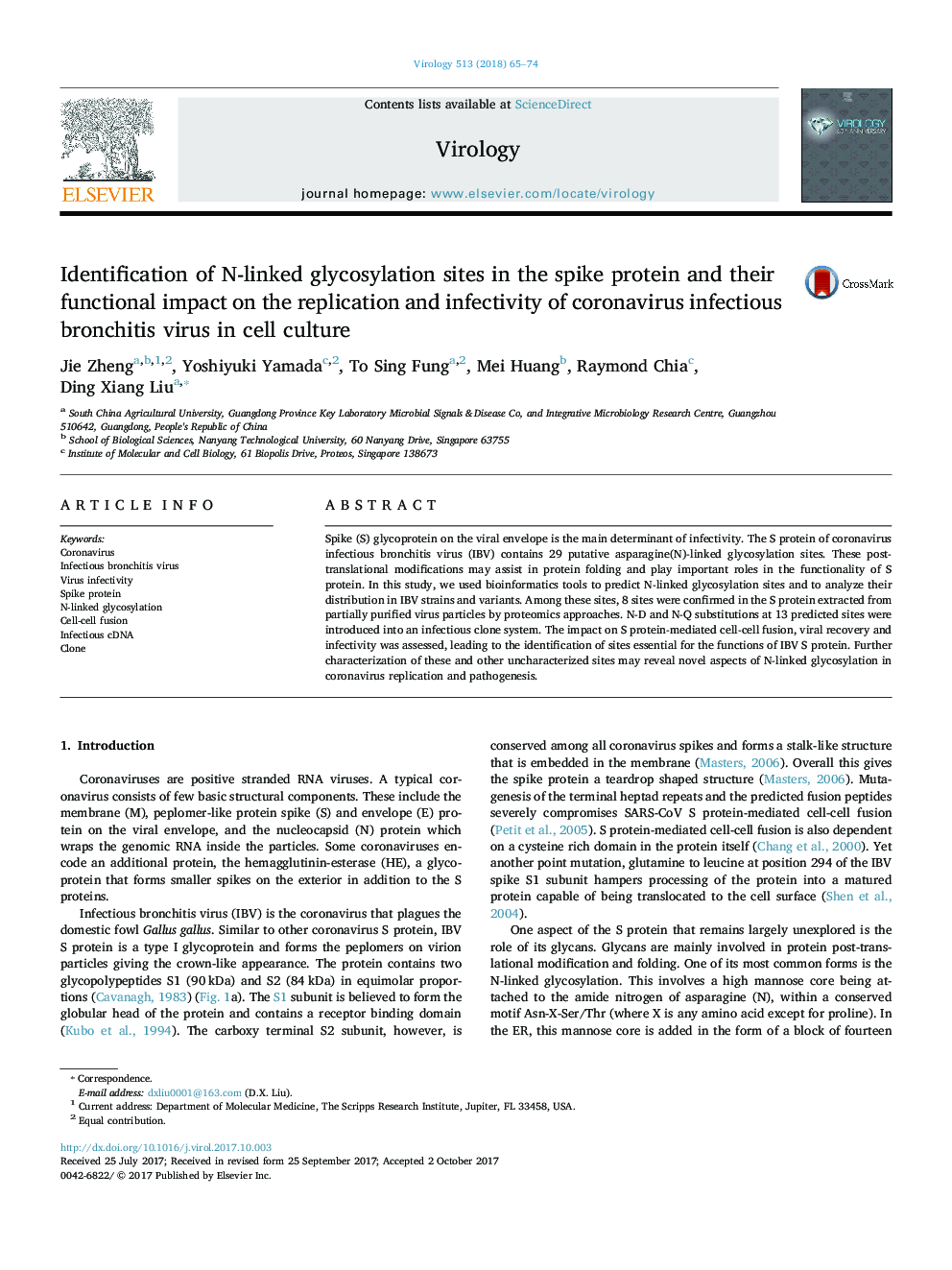| Article ID | Journal | Published Year | Pages | File Type |
|---|---|---|---|---|
| 5674818 | Virology | 2018 | 10 Pages |
â¢Among 29 putative glycosylation sites in the IBV spike (S) protein, 8 sites are confirmed by mass spectrometry analysis.â¢N-D/Q mutations at N212 and N276 abolish the fusion activity of IBV S protein and the infectivity of recombinant viruses.â¢Mutations at other glycosylation sites differentially affect cleavage and fusion of IBV S protein, and infectivity of rIBVs.â¢N283 in IBV S protein is critically involved in IBV replication and infectivity independent of N-linked glycosylation.
Spike (S) glycoprotein on the viral envelope is the main determinant of infectivity. The S protein of coronavirus infectious bronchitis virus (IBV) contains 29 putative asparagine(N)-linked glycosylation sites. These post-translational modifications may assist in protein folding and play important roles in the functionality of S protein. In this study, we used bioinformatics tools to predict N-linked glycosylation sites and to analyze their distribution in IBV strains and variants. Among these sites, 8 sites were confirmed in the S protein extracted from partially purified virus particles by proteomics approaches. N-D and N-Q substitutions at 13 predicted sites were introduced into an infectious clone system. The impact on S protein-mediated cell-cell fusion, viral recovery and infectivity was assessed, leading to the identification of sites essential for the functions of IBV S protein. Further characterization of these and other uncharacterized sites may reveal novel aspects of N-linked glycosylation in coronavirus replication and pathogenesis.
